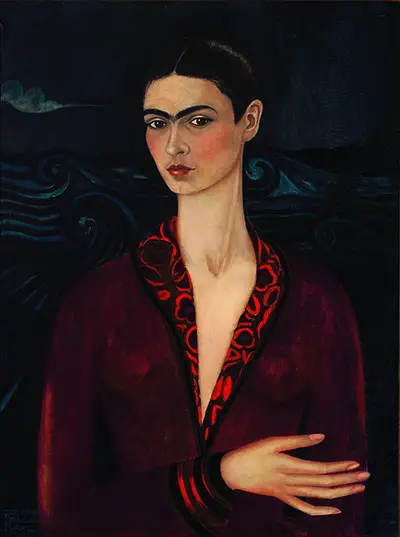Born in Mexico in 1907, Kahlo struggled to achieve fame during her lifetime but, after her death, became the subject of a cult that has been dubbed "Fridamania". Her self-portraits are stylised, but resolutely un-idealised; she had no reservations about painting her heavy eyebrows, which joined together in the middle.
As a result, her likeness has become one of the most easily recognisable of all world artists.
Self-Portrait in a Velvet Dress is a perfect example of Frida Kahlo's art and its aesthetics. The viewer's eyes are immediately drawn to her face, with the delicately-rendered eyes showing a genuine spark of intelligence, framed by those unmistakeable eyebrows.
She has a slight smile, as alluring as that of the Mona Lisa. The pattern on the collar of her dress, and the stylised clouds in the background, mirror one another even as the colours - red against blue - form a stark contrast.
The lower half of the painting, meanwhile, appears to have taken the viewer back in time: Kahlo's body, particularly her arm, look straight out of a medieval painting, showing the kind of anatomical distortion characteristic of that era.
The painting's emphasis is very much upon Kahlo's face, with stylisation being used to take the rest of the frame a little out of focus.
Modern "Fridamania" focuses on the drama of Kahlo's life at least as much as on her art. Nonetheless, anything that draws more and more people towards the skill and beauty of her paintings can be no bad thing.
Every day, all around the world, people are discovering Fridamania for themselves - and buying a copy of "Self-Portrait in a Velvet Dress" for display in the home will be the perfect way to get involved.

